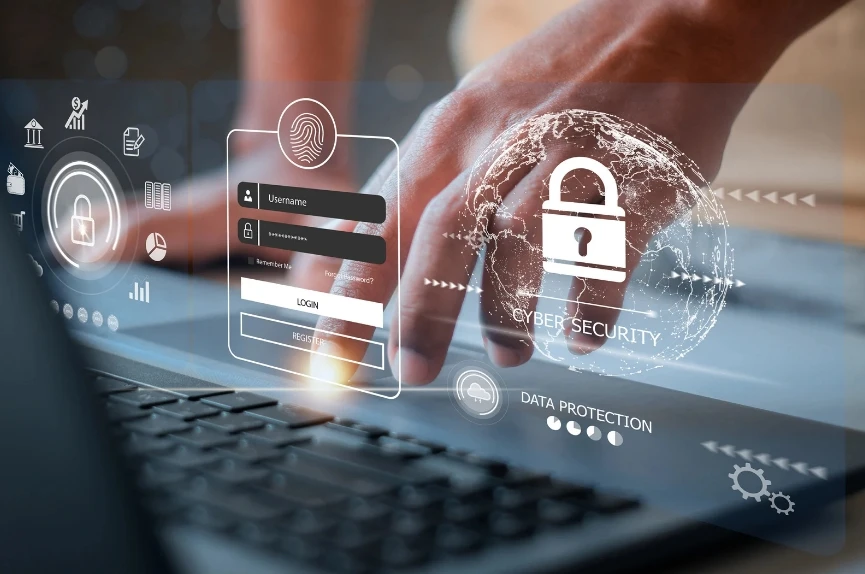
|
Getting your Trinity Audio player ready...
|
In today’s hyperconnected world, the importance of cybersecurity cannot be overstated. With the rise of digital platforms, mobile devices, and internet-based services, individuals are more vulnerable than ever to cyberattacks. From data breaches and identity theft to phishing scams and ransomware, the risks are growing exponentially. Understanding and implementing basic cybersecurity practices is critical to safeguarding your digital life.
1. Why Cybersecurity Matters in 2024
As technology advances, so do the tactics employed by cybercriminals. Whether you’re a casual internet user or a business owner, your personal information, finances, and reputation are at risk. In 2024, with more individuals working remotely, utilizing cloud services, and embracing smart devices, the need for cybersecurity awareness and practices has never been greater.
Key Threats in 2024:
- Phishing Attacks: Deceptive emails and websites trick users into sharing personal information, such as login credentials.
- Ransomware: Malicious software that encrypts files on a victim’s computer, demanding payment to restore access.
- Data Breaches: Unauthorized access to sensitive data, including personal and financial information, often resulting in identity theft.
- IoT Vulnerabilities: Smart devices such as home assistants, security cameras, and thermostats, when not properly secured, can be hacked and exploited.
2. Password Protection: Your First Line of Defense
A strong, unique password is your primary defense against unauthorized access to your accounts. However, many people still use weak or reused passwords, making them easy targets for hackers.
Best Practices for Password Security:
- Use Complex Passwords: Ensure your password is at least 12 characters long and includes a mix of upper and lower case letters, numbers, and special characters.
- Avoid Reusing Passwords: Using the same password across multiple accounts makes it easier for hackers to compromise your entire digital presence.
- Use a Password Manager: These tools store and manage your passwords securely, allowing you to create strong, unique passwords without having to remember them all.
- Enable Two-Factor Authentication (2FA): Adding an extra layer of security by requiring a second form of verification, such as a text message or authentication app code, is essential.
Benefits of Strong Password Management:
- Protection from brute-force attacks, where hackers attempt to guess your password.
- Reduced risk of data breaches across multiple platforms.
- Improved overall digital hygiene.
3. Securing Your Devices: Laptops, Smartphones, and IoT
The devices you use every day are entry points for cybercriminals if left unsecured. Laptops, smartphones, and IoT devices (Internet of Things) need strong protection to prevent unauthorized access and malware infections.
Key Device Security Measures:
- Keep Your Software Updated: Ensure your operating systems and applications are up-to-date, as updates often include patches for security vulnerabilities.
- Install Antivirus Software: A good antivirus program can detect and remove malware, spyware, and ransomware before they cause damage.
- Use Encryption: Encrypt sensitive files and data on your devices to prevent unauthorized access.
- Avoid Public Wi-Fi for Sensitive Activities: Public networks can be easily intercepted by cybercriminals, so avoid using them for online banking or other sensitive activities.
IoT Security Tips:
- Change Default Passwords: Many IoT devices come with default passwords that are easy to guess. Always change them to something more secure.
- Disable Unnecessary Features: If a device doesn’t need remote access, disable it to reduce potential entry points.
- Regularly Update Firmware: IoT devices often require firmware updates to fix vulnerabilities. Make sure to check for updates regularly.
4. Safe Browsing: Protecting Yourself Online
Browsing the internet without proper precautions can expose you to a wide range of cyber threats. From malicious websites to phishing attacks, cybercriminals use the web to compromise your security.
Best Practices for Safe Browsing:
- Use HTTPS Websites: Ensure the website you visit uses HTTPS (HyperText Transfer Protocol Secure), which encrypts data exchanged between you and the site.
- Be Wary of Phishing Scams: Avoid clicking on suspicious links in emails or on websites. Check for signs like poor grammar, mismatched URLs, or a sense of urgency.
- Use Ad Blockers: Some online ads contain malware. Ad blockers can help prevent these malicious ads from appearing on your browser.
- Clear Cookies Regularly: Cookies store data about your browsing habits, and some websites may use this information in ways you didn’t agree to. Clearing cookies helps protect your privacy.
The Role of VPNs in Safe Browsing:
- VPN (Virtual Private Network): A VPN encrypts your internet connection, ensuring that your data remains private and secure, especially when using public Wi-Fi. It hides your IP address, making it difficult for hackers to track your online activity.
5. Protecting Your Data: Backups and Encryption
One of the best ways to protect yourself from cyberattacks is to have a plan for data protection and recovery. Regular backups and encryption of sensitive data are critical components of any cybersecurity strategy.
Data Protection Essentials:
- Regular Backups: Create backups of important files and store them in multiple locations, such as external hard drives or cloud services. This ensures that your data can be recovered if your system is compromised by ransomware or a hardware failure.
- Use Encryption Tools: Encrypt files, particularly those containing sensitive information like financial records or personal identifiers, to protect them from unauthorized access.
Benefits of Data Encryption:
- Ensures that only authorized users can access sensitive data.
- Protects against data breaches by making stolen information unusable.
- Complies with many regulatory requirements for data protection.
6. Social Engineering Attacks: How to Recognize and Prevent Them
Cybercriminals often bypass technical defenses by targeting individuals through social engineering attacks, manipulating them into giving up sensitive information or access to systems.
Common Social Engineering Tactics:
- Phishing: Fraudulent emails or messages designed to trick recipients into revealing personal information.
- Spear Phishing: A more targeted version of phishing where attackers research their victims to make their messages more convincing.
- Pretexting: An attacker poses as someone in authority or a trusted figure to gain access to sensitive information.
- Baiting: Offering something enticing, like free software, in exchange for personal information.
How to Avoid Social Engineering Attacks:
- Be skeptical of unsolicited requests for information, even if they seem legitimate.
- Verify the identity of individuals or organizations before sharing any personal data.
- Educate yourself and others on the warning signs of social engineering.
7. Email Security: Preventing Attacks Through Your Inbox
Email remains one of the most common attack vectors for cybercriminals. From phishing to malware-laden attachments, email security is critical for both individuals and businesses.
Tips for Securing Your Email:
- Use a Secure Email Provider: Some email services offer encryption and other security features that make it harder for hackers to access your inbox.
- Never Open Suspicious Attachments: If you receive an attachment from an unknown sender or an unexpected source, don’t open it.
- Be Cautious with Links: Hover over links before clicking to verify that the URL is legitimate and not a phishing attempt.
8. Cybersecurity for Businesses: Key Considerations
For businesses, cybersecurity is more than just an IT issue; it’s a fundamental part of risk management. A single cyberattack can result in significant financial loss, legal consequences, and damage to the company’s reputation.
Key Business Cybersecurity Strategies:
- Develop a Cybersecurity Policy: Outline security practices, such as password management, data encryption, and incident response procedures.
- Employee Training: Regularly train employees on how to recognize and respond to cybersecurity threats like phishing and social engineering.
- Regular Security Audits: Conduct audits to identify vulnerabilities in your systems and address them promptly.
Conclusion
In the digital age, cybersecurity is essential for protecting your personal information, finances, and digital life. By implementing strong passwords, securing your devices, and being aware of the latest threats, you can significantly reduce your risk of falling victim to cybercrime. Whether you’re an individual or a business, adopting cybersecurity best practices in 2024 is crucial for navigating the online world safely and securely.
Also Read: https://skipper.pk/2024/09/08/how-ai-is-revolutionizing-healthcare-in-2024/






